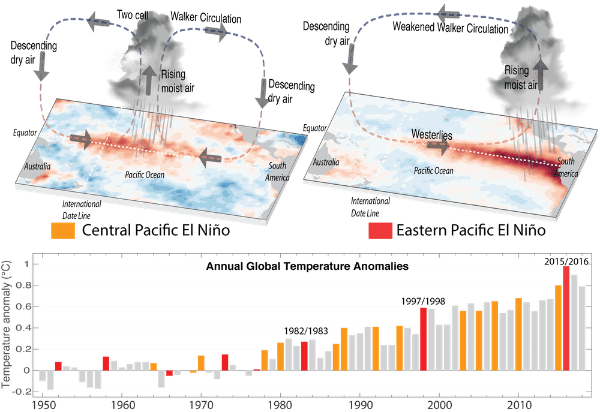A group of researchers from the University of New South Wales explain how they developed a method to obtain the centuries-long seasonal record using coral cores.
A team of scientists has extracted a 400-year record of El Niño events using coral reef drilled from the Pacific Ocean, revealing that climate patterns are rapidly becoming stronger and unusual.
The peer-reviewed study was published in the internationally renowned Nature magazine on Monday. In it, the group of researchers from the University of New South Wales explain how they developed a method to obtain the centuries-long seasonal record using coral cores.
Much like tree rings, coral cores can provide information about the local environmental history. By comparing the data collected, the investigation shows that El Niño events are strangely appearing more frequently in the Central Pacific Ocean and Eastern Pacific events may be getting stronger.
El Niño state occurs every two to seven years when the central and eastern tropical Pacific sea-surface warms up. These warming events are so extreme and powerful that their impacts translate in droughts for some parts of the world or heavy rain.
During the common Easter Pacficic events, Australia and parts of Asia often receive much less rainfall than during normal years. While the opposite applies to the western parts of the Americas, where heavy rainfall causes massive floods.
Yet things have changed in the past 30 years. “We are seeing more El Niños forming in the central Pacific Ocean in recent decades, which is unusual across the past 400 years,” said lead author Mandy Freund, adding that at the same time “there are even some early hints that the much stronger Eastern Pacific El Niños, like those that occurred in 1997-98 and 2015-16 may be growing in intensity.”

These findings are important as a change in this sort of climate behavior has serious implications for societies and ecosystems around the world. For example, the most recent Eastern-Pacific El Niño event in 2015-2016 triggered disease outbreaks across the globe.
As climate change continues to impact earth, many of the hottest years on record also coincide with El Niño events. Especially worrisome, is the Central Pacific pattern which divides the event into two cells concentrating rain in the middle of the Pacific Ocean. This forces dry air to both Australia, Asia, and the Americas, which usually results in little to no rainfall, thus droughts.
It also goes without saying that stronger Eastern pacific events will result in larger amounts of rainfall and even bigger floods across the coastal cities of the western Americas, which at the same time means danger for human life but also seasonal crop failure and economic losses.
Yet researchers are convinced that “having a better understanding of how different types of El Niños have affected us in the past and present, will mean we are more able to model, predict and plan for future El Niños and their wide-ranging impacts.”